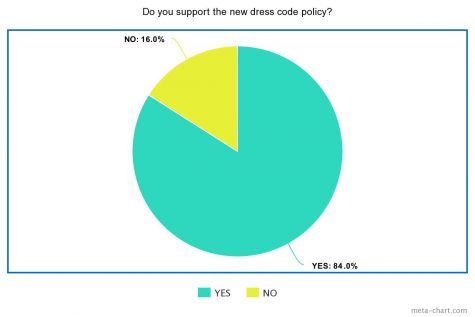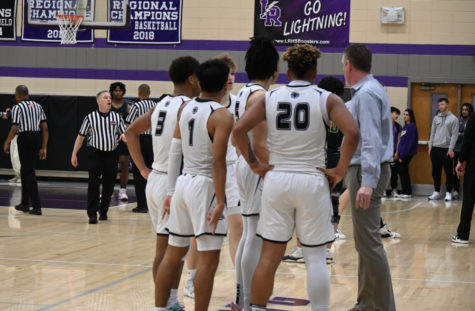The Year for Autonomy
HCPSS Changes Dress Code Policy
Students and administration have battled for a long time over appropriate vs inappropriate attire. This school year marks the first time the new HCPSS dress code will be implemented in all schools.
Policy 9210 states that students are permitted to wear hats, hoods and headwear, ripped jeans, tank tops (including spaghetti straps, halter tops, and strapless tops), athletic attire, and clothing with commercial or athletic logos as long as certain body parts are covered.
In the past, students were not allowed to wear any headgear, except for religious purposes, or show any skin in the shoulder area. The new policy is meant for students to attend school without needless barriers and allow teachers to teach without the uncomfortability of enforcing dress code.
“The old dress code didn’t allow tank tops or strapless tops, which I feel was unnecessary,” noted Senior Darlene Kessie. “I understand the midriff has to be covered for decency, but it allowed for a lot of teachers to be unnecessarily dress-coding students, making them feel insecure about their outfit.”

Principal Josh Wasilewski noted, “By changing the dress code and allowing more items to be worn, the idea behind it is that it takes the burden off of school staff for constantly saying ‘take your hat off, take your hood off.”
A month into the school year, some students appreciate the new changes.
Senior Emily Kubinak commented, “Some positives that I’ve found are that students are able to express themselves more clothing-wise and feel less stressed about walking throughout school each day worrying if they’ll get called out for the outfit they’re wearing.”
“[The policy] is going to allow people to be able to dress to express who they are,” added Kessie. “For example, black girls like me used to get reprimanded for wearing a headscarf unless it was for religious purposes, and now [we] don’t have to worry about what a teacher will say.”
Furthermore, the new policy reduces the number of conflicts between staff and students. For an example, Wasilewski explained, “Sometimes it happens where we have to say to students, ‘you need to take it off’ and they don’t. It’s a hat or hood, or as soon as you take it back off you put it back on and it turns into a student becoming upset and facing disciplinary action.”
While the policy has led to increased comfortability and confidence, it also poses some concerns about security and modesty. Students can easily conceal weapons or drugs under hoods. Additionally, hoods allow students to hide having both earbuds in, which could be dangerous in emergencies if students can’t hear directions.
Kubinak mentioned, “One of my friends made a good point of how it would be easier for someone that doesn’t go to school here to fit in and hide in the shadows with a hat and hood on constantly.”
Other arguments opposing the new policy concern HCPSS’s goal for preparing students for college and career readiness.
Wasilewski continued, “What I’ve heard against the policies– and I’m not focusing on hats and hoods because there’s more to it– [is that] we’re supposed to treat students as professionals, and we’re preparing them for a workplace setting. You don’t want to see them wearing hats and hoods in that setting as well.”
There are ups and downs to everything, so HCPSS families should note any effects resulting from the new policy change.

![Long Reach Boosters Club. (March 24, 2023 - 11:33pm). [Digital Image]. Long Reach Has Talent Show Spring 2023. Facebook, Retrieved April 17, 2023 from https://www.facebook.com/longreachboosters/posts/pfbid03kN5BKQj5TDefz1rtVZ5fTBBhjwA39UPPd8GctyMgFvY7B4RihH4rY4EqE7xPwikl.](https://lrhslightningflash.com/wp-content/uploads/2023/05/LR-Talent-Show-3-475x316.jpg)






